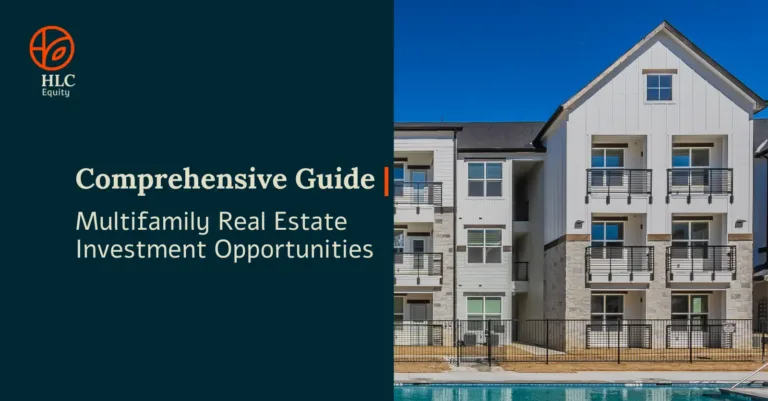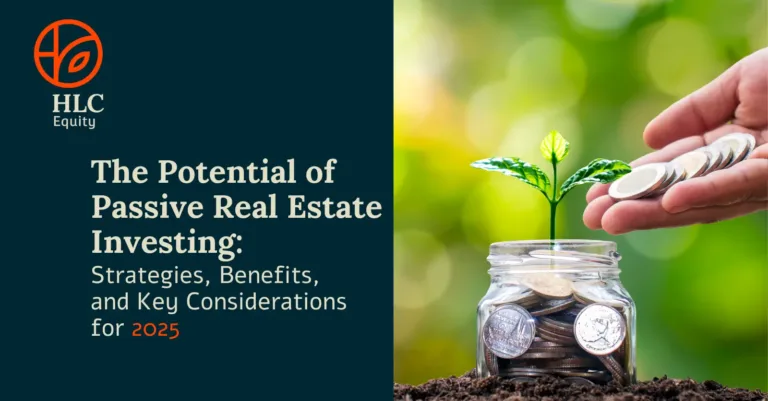It’s tough out there. The CRE markets are facing perhaps the most challenging environment since the 2008 crisis, with tightened Fed policy and heightened geopolitical uncertainty providing a one-two punch to the CRE space.
While some onlookers are signaling that it’s time to head for the hills, we believe that the current moment presents significant opportunities for CRE investment firms, Family Offices, and most importantly- the investors we represent here at HLC Equity.
Let’s take a hard look at several CRE and MF challenges we may collectively face in the days, weeks, and months to come.
Private equity slowed significantly in the second half of 2022, in stark contrast to the period of unprecedented activity we saw from late 2020 through the middle of 2022.
This change was a result of widespread market disruption and uncertainty, largely driven by recent energy shocks, geopolitical chaos, the withdrawn debt market, and the twin dragons of rising interest rates and inflation.
Over the same period, PE volume dropped by 22%, compared to the same period 12 months earlier, and in most cases, has returned to the levels we saw before the COVID-19 pandemic. In light of record levels of dry powder- with US PE holding roughly $1.1 trillion, PWC expects the rise of more creative approaches to deploying capital, including all-equity deals, private debt placement, and minority investments.
They also see a broader recovery in activity, either as a result of the Fed reining in inflation or as a result of depressed asset values. Regardless of the long-term outlook, it’s clear that PE firms will be tested by the near-term investing climate.
HLC is currently weathering the storm, largely as a result of prudent decisions taken during the runup, but we are not immune to the winds of change dislocating the wider PE markets. With that said, this is not HLC Equity’s first downturn. Over our 70+ years in the markets, we’ve seen several severe declines, including the high-interest rate climate of the 1970s and early 1980s, the 2008 crash, and the steep decline we saw during the start of the pandemic. Our multigenerational long-term investment thesis, and ability to execute on a high level, has ensured we’re able to continue to deliver value for our clients- good times or bad.
Multifamily Trends We See in 2023
Now, on to the question that’s probably at the top of your mind: what does the next year have in store?
Multifamily Challenges in 2023
First, we’ll start with some of the obstacles we expect to see in the year to come.
As Q1 approaches, the big question on everyone’s mind right now is:
Where do you price equity?
We’re entering what is potentially the most challenging financing environment in recent memory- even taking into account the high rate atmosphere we saw in the 1980s.
Senior lenders lending on non-full stabilized assets want 7-8%.
The preferred equity and subordinate groups want somewhere in the range of 13-15%…so what does that mean for equity pricing?
In theory equity pricing, needs to be at 20% given current market conditions and interest rates, but that’s not what we’re seeing on the ground. We’re seeing a disconnect in the market- and we’re not seeing the tailwinds at our backs as we have for the past few years.
How do you price that? How do you plan against that? And how do you mitigate the negative effects – those are some of the questions we’re asking.
Up until now, negative leverage was offset by historical rent growth – at least 6-8% annually – on a renewal basis, rents are still sticking, but we’re also seeing significant challenges and softening rents- not just in the markets we serve, but nationally.
Dislocation in the Market
Despite challenges, with both broader markets and specific properties within our portfolio, real estate remains incredibly attractive compared to other asset classes- like equities, with some high-flying stocks down more than 70% from their peak- a number we’ve not seen anywhere in the RE space- even in the most impacted properties.
If you can buy and hold for a long period of time- you’re still probably going to do very well.
Every cloud has a silver lining, and one takeaway we’ve gleaned from our current market woes is that HLC’s long-term thesis continues to deliver value for our partners. If you can buy and hold for a long period of time- you’re still probably going to do very well.
A short-term focus might pay dividends- and it might not- at the end of the day, your gains and growth are at the whims of the market- that’s closer to gambling than investing. Conversely, a long view, with the right thesis, allows us to better withstand market tides and create and defend value over time.
The HLC Equity thesis is simple- we believe that a focus on core markets with attractive demographics and a healthy demand/supply ratio is the best way to protect and grow investor value.
Real estate is still a solid investment on a risk-adjusted basis- because of many of its historical advantages, like favorable tax status and its position as a shield against inflation, etc.
A lot of this is reinforcing the faith we had in our historical underwriting model- being practical and moving deliberately. That measured approach is paying dividends right now as the majority of our portfolio is enjoys fixed rate debt and consistent income growth.
The negative leverage safety net is no longer in play.
Over the past few years, if something went wrong, you could employ the (at the time) awesome power of negative leverage and count on rents to continue to grow enough over time to cover you.
Leading experts in the multifamily space do expect some moderation of rent growth, although rents are still projected to grow at a higher rate than the historical average.
In addition, income growth will likely remain positive, with the Freddie Mac Multifamily 2023 Outlook forecasting a decline in property values, and positive gross income growth, with fundamentals rebounding, albeit slowly, in early Q3.
Redemption Woes
If you follow news in the P/E and CRE spaces, you’ve probably heard about some of the redemption issues at the Blackstone REIT, amongst others. In early December, the $69 billion dollar real estate fund for wealthy individuals gave notice that it would limit redemption requests– a move that many in the industry viewed as a potential “canary in the coal mine” for the broader real estate markets.
The news spooked investors, with the firm’s stock falling as much as 10% on the Thursday after the letter was published. Beyond the headlines, we’ve also heard of similar issues through the grapevine. There are a lot of challenges with fund structures, many of which were first made clear during this recent discovery phase.
These woes are not limited to the public markets. Private real estate firms are facing similar hurdles, with private partnerships having to start to call capital on projects- particularly if they are facing issues with floating rate debt. The inability to tie down debt costs and our current advanced inflationary environment are both major challenges faced by many private real estate companies right now.
However, there are strategies investors can take to not just survive- but thrive, during a market downturn. HLC Equity’s strategic plan for success in a down market includes:
-Mitigating the impact of rising interest rates through the strategic repositioning of assets
-Solidifying and protecting previous growth
-Embracing a holistic approach, with expense reduction, supplier and vendor management, and process improvement as equally important priorities for the HLC Equity team
Potential Opportunities in 2023
Let’s look at some of the trends currently buttressing the HLC Equity portfolio and the multifamily market as a whole.
Sustained Demand for Multifamily Housing
We believe demand for multifamily housing will continue to grow in 2023.
Despite softening conditions globally, we are seeing tremendous sustained demand for multifamily. Rising mortgage rates across the board have put a damper on the overall housing market- to the benefit of the multifamily sector.
Rising Mortgage Rates Reduce SFH Demand
Home sellers and home buyers are staying on the sidelines for two main reasons.
For buyers, it’s the fact that financing costs have gone through the roof compared to last year.
And many sellers are not yet ready to come to terms with the fact that their homes are probably worth a lot less than they were last year.
Hence, the decline in home sales and overall home-related transactions, like refinances. This is part of the reason we see demand for multifamily housing continuing to grow- people still need a place to live, and if they’re not buying, they’re renting.
Projected Multifamily Construction Starts
Multifamily starts are also likely to decline significantly- restricting future supply and defending existing multifamily investors. Lower lending volume is leading to higher financing costs, which is curbing new projects. You’ll see less multifamily delivery on the market as a whole.
While we may see some projects come online in 2023-2024, due to the advanced/almost-built state of these projects, that is likely to slow to a trickle in 2025- largely due to the multi-year nature of the development and construction of a new multifamily property. Greenstreet and several other firms see new supply in 2025-2026 coming in at 1% of inventory- which is not enough to absorb all the coming demand for multifamily units.
Roadmap to Growth 2023
We plan to meet 2023’s challenges head-on. Here’s where HLC and other owner/operators can find and defend value in the coming year.
Strategic Repositioning
Like everyone else, we’ll be impacted by rising interest rates. To mitigate any rate-related issues, we plan to follow several strategies, including:
-Reducing our total interest expense via refinancing
-A focus on revenue growth to create the conditions to refinance when the opportunity presents itself
-Implementing effective cost controls
Solidify Previous Growth
We’ve had a good run these last few years- and it’s vital that we solidify that growth. This may be more challenging simply due to worsening market conditions, but there are several paths to protecting said growth.
Enacting more robust occupancy management will reduce our dependence on offering concessions, giving us the ability to bring renewals that are currently at a discount-to-market up, ideally resulting in net rent growth despite declining asking rents.
Deliberately Reduce Expenses
We’re also laser-focused on reducing expenses wherever possible. Our expense reduction strategies include (but are not limited to):
-Capping exposure to energy costs through long term contracts
-Property tax appeals where necessary
-Vendor evaluation and consolidation to achieve better pricing through economies of scale
Where We Stand
The vast majority of the HLC Equity portfolio is fixed-rate debt- our properties are performing at a high level, and for the few where we do have challenges, we have people on the ground, managing them diligently, and we believe we’ll manage through the current challenging environment to produce solid results in the long term.


